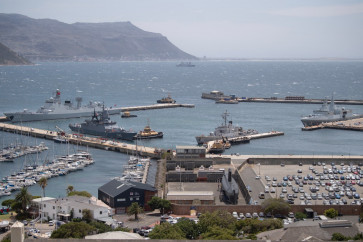Popular Reads
Top Results
Can't find what you're looking for?
View all search resultsPopular Reads
Top Results
Can't find what you're looking for?
View all search resultsGovt told to brace for solar storms
Geologists in West Sumatra have urged the government to immediately make efforts to mitigate the impact of a solar storm that experts have predicated will take place between 2012 and 2015
Change text size
Gift Premium Articles
to Anyone
G
eologists in West Sumatra have urged the government to immediately make efforts to mitigate the impact of a solar storm that experts have predicated will take place between 2012 and 2015.
Coordinating head of the West Sumatra chapter Indonesian Geologists Association (IAGI) Ade Edward told The Jakarta Post the government had officially announced possible threats resulting from
the solar storm, or geomagnetic storm, but there was still no concrete evidence.
“The National Aeronautics and Space Agency [Lapan] has officially released the announcement two weeks ago that the solar storm might take place in Indonesia between 2012 and 2015, but the government has yet to set up any serious program to address the issue.”
Ade said the solar storm would have an adverse impact on digital communications and power transmission, besides affecting the earth’s geomagnetic field.
“It could trigger other natural occurrences, such as volcanic activities, tectonic quakes and extreme weather that could cause disasters.”
He called on the government to swiftly follow up the issue, such as by conducting thorough research and mitigation efforts.
The efforts, Ade said, should involve relevant agencies like the National Disaster Mitigation Agency (BNPB), the Indonesian Institute of Sciences (LIPI), Research and Application of Technology Agency (BPPT), Energy and Mineral Resources Ministry and the Meteorology, Climatology and Geophysics Agency (BMKG).
The results could then be used by regional administrations to implement local policies, he added.
“We can’t imagine when power and communications across the country were suddenly cut...,” said Ade, who is also central operational coordinator of the West Sumatra Disaster Mitigation Agency.
“Disaster mitigation agencies at the national and provincial levels may not be able to use standard equipment in the events of earthquake, fire, floods and landslides, as special methods are needed to communicate and handle the situation.”
Continuous blackouts and communication cuts, he added would have negative impacts on vital services, such as hospitals, fire brigades, the banking sector and public communication, as they could cause panic and chaos.
Ade said even the disaster mitigation system in Indonesia had many shortcomings.
He said only one of the six tsunami siren units, set up by the BMKG along the western coast of South Sumatra, had been activated when the 7.9-magnitude quake hit the province last year.
“During the quake, communications between President Susilo Bambang Yudhoyono and [then] governor Gamawan Fauzi could only be restored three days later. Imagine how the agencies could carry out coordination,” said Ade.
The government, he said, should improve the disaster mitigation system to anticipate the impacts of the solar storm to minimize the risks of disaster.
“Lapan predicts the solar storm would take place between 2012 and 2015, but its peak would last for around a week.”










